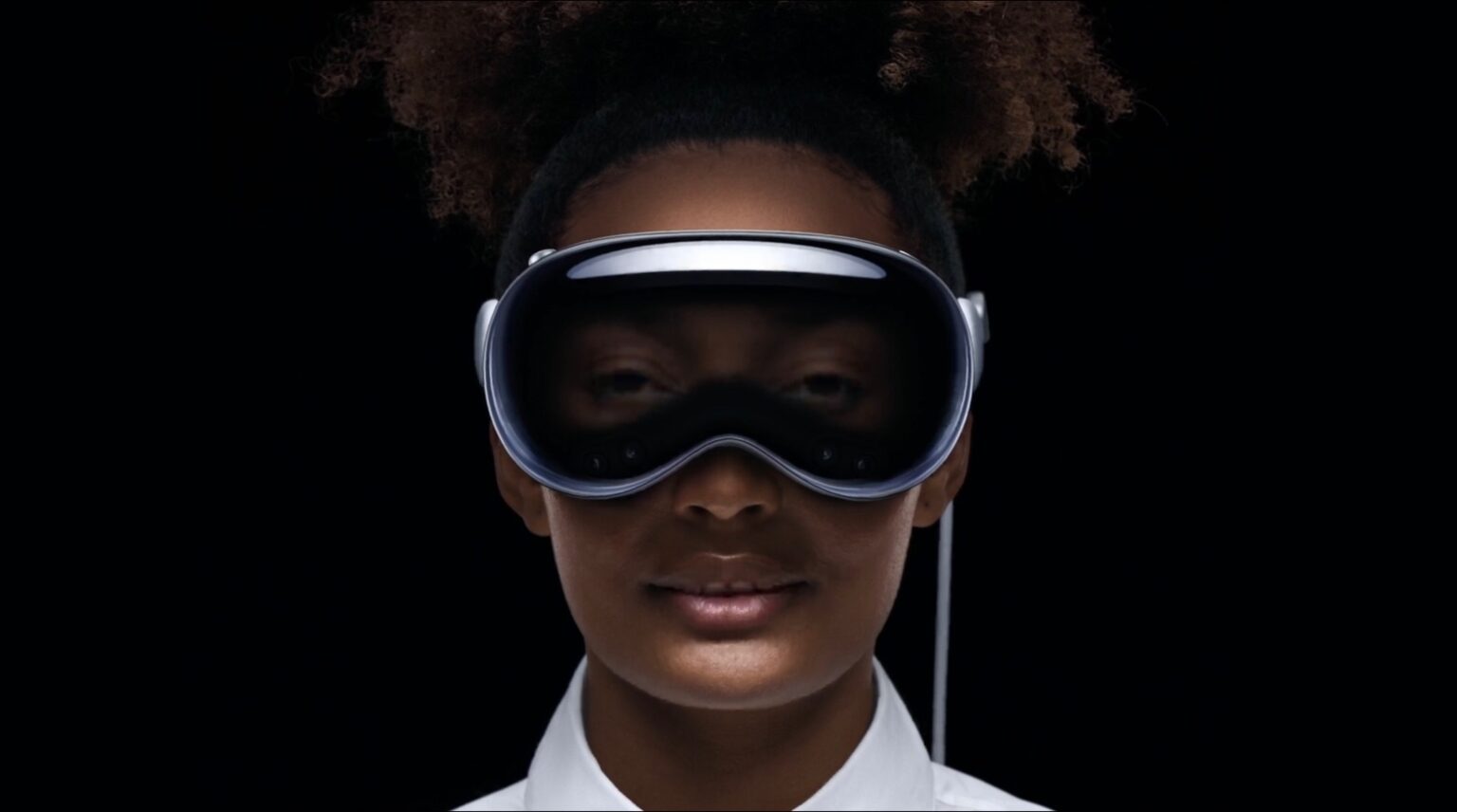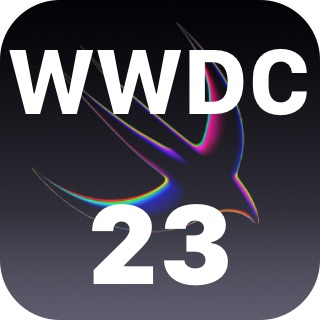
Apple’s long-awaited Vision Pro headset features all of Apple’s apps in a floating, immersive 3D space that’s designed to let wearers interact seamlessly with the real world, rather than walling them off in a virtual one.
“Vision Pro will introduce us to spatial computing,” said Apple CEO Tim Cook during the recorded WWDC23 keynote Monday as he unveiled the pricey device. “This marks the beginning of a journey that will bring a powerful new dimension to personal technology.”
The company described it as “the first Apple product you look through, not at.” Vision Pro starts at $3,499 and will be available early next year.
Apple’s Vision Pro headset is finally here … almost
Today’s WWDC23 keynote concluded with an introduction of the Vision Pro. After unveiling iOS 17, iPadOS 17, macOS Sonoma, watchOS 10 and several new Macs, Cook used Apple’s classic “One more thing…” line to preview the Vision Pro headset and the new visionOS platform that the device will run on.
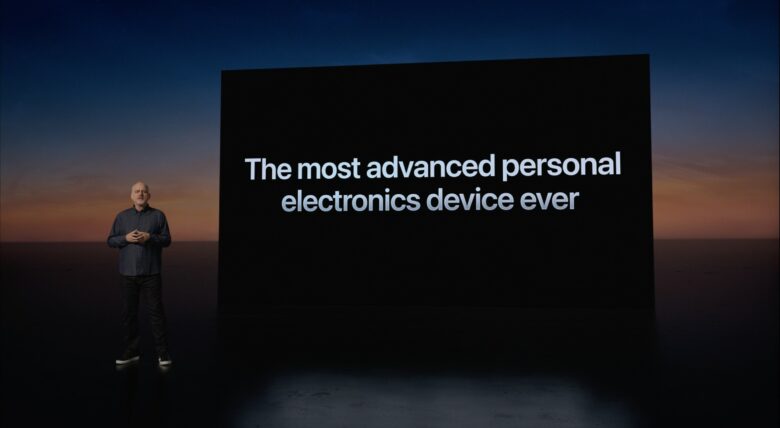
Photo: Apple
Apps can be placed anywhere spatially around your environment. By turning a physical dial (a la the Apple Watch’s Digital Crown) on the side of the device, you can tune up or down an immersive background to your content.
Apple showed off a few features of the Vision Pro headset during a brief introduction. The device is “one magically controlled with just your hands, eyes and voice” said Alan Dye, Apple’s vice president of human interface design. “Every element has been crafted to have a dimension of physicality.”
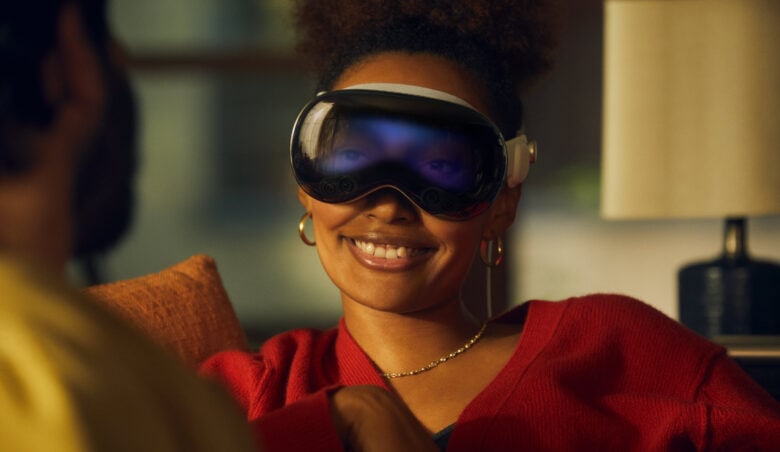
Photo: Apple
EyeSight — designed to eliminate that walled-off feeling that VR headsets cause — uses an external display and an internal camera system. Cameras pointed at the wearer’s eyes will project their peepers on the outside of the device for others in the room to see. For the wearer, people outside will dynamically appear in their AR environment. When the wearer is immersed in an app, the outside display will light up, covering their eyes, indicating that they’re no longer paying attention to the room.
Vision Pro can be used as a virtual 4K display for a Mac. This floating (two-dimensional) display can be freely resized in front of the wearer’s eyes to be big or small in their virtual space. 3D apps running from Vision Pro can appear side by side with a Mac’s screen.
More immersive entertainment
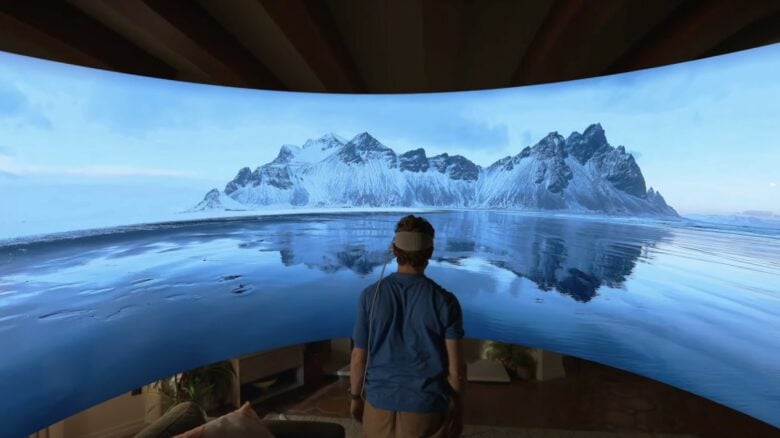
Photo: Apple
Vision Pro can take 3D pictures and spatial videos. “EyeSight makes it clear to those around you when” you are taking these pictures, said En Kelly, a senior engineering program manager within Apple’s Technology Development Group, which has been working on the headset.
You can use Vision Pro to watch TV, movies and play games in a virtual movie theater — even for 3D movies — on a display as large as you want. There is no other device on the market “that can provide this quality of movie experience,” said Kelly.
Apple thinks Vision Pro will “change the way we communicate, collaborate, and enjoy entertainment,” Cook said before introducing Disney CEO Bob Iger. After testing Vision Pro, Iger said he thinks people will be more “deeply immersed in [Disney’s] stories.”
A concept video showed what may be possible with Vision Pro. For instance, you might be able to watch sports in a more engaging environment, with overlaid scores and 3D camera scenes.
Iger said “Disney+ will be available on day one” when the Vision Pro launches.
Apple Vision Pro design
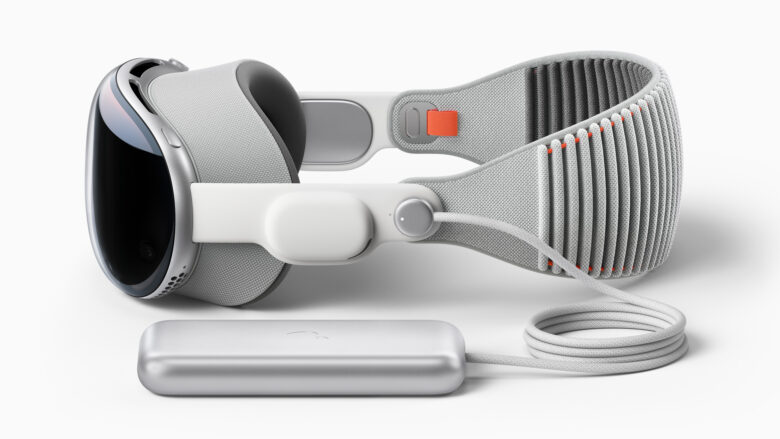
Photo: Apple
Vision Pro is made of modular parts. Flexible straps position audio pods “close to your ears” and enable Spatial Audio. Audio raytracing will match the audio from the headset to the environment of the room.
The rear head strap is designed for breathability and stretch. The band is swappable with a dial to adjust for size.
Optical inserts magnetically attach inside the headset to accommodate wearers of prescription eyeglasses. Differently sized foam pieces can make sure the Vision Pro remains comfortable on differently sized heads.
A separate battery pack allows the device to remain light. The cable routes from the left side down your back to stay out of the way.
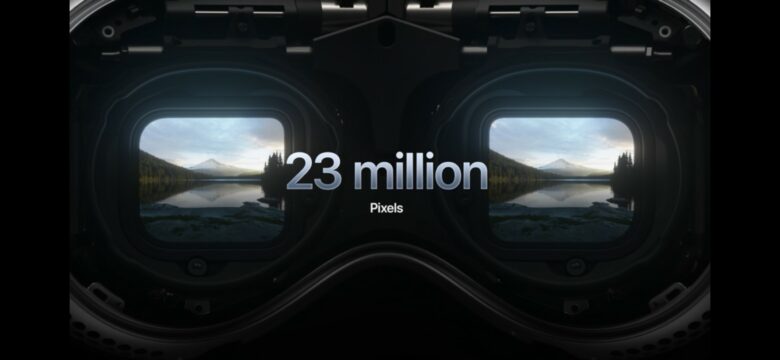
Photo: Apple
The display fits 64 pixels in the space of a single pixel on the iPhone, fitting more pixels than a 4K television in the space of a postage stamp — more than 23 million in total.
Powered by dual Apple silicon chips
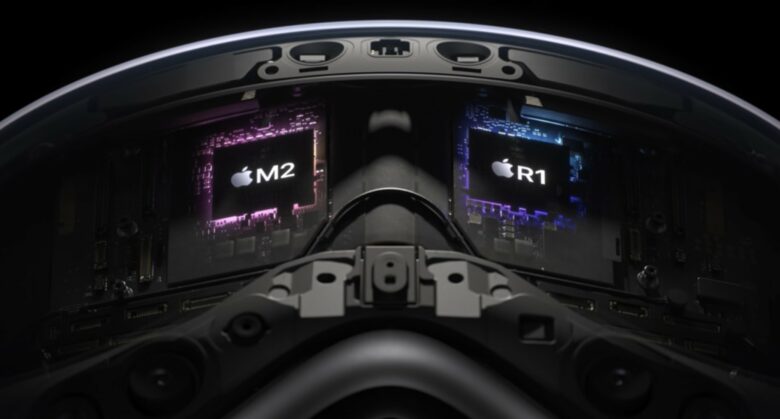
Photo: Apple
An M2 and brand-new R1 chip run in parallel. The R1 combines the input from 12 cameras and even more sensors in just 12 milliseconds — less than “the blink of an eye,” Apple said. The sensors also precisely track the wearer’s hands, eliminating the need for a special controller.
How does FaceTime work on a headset that blocks your eyes?
Apple’s video calling platform, FaceTime, needs a solution to a simple problem: With Vision Pro on your head, there’s no way for a camera to see your whole face. So, when you set up the device, you can take a detailed scan of your face. Then, Vision Pro will map your current facial expressions to the image.
For developers
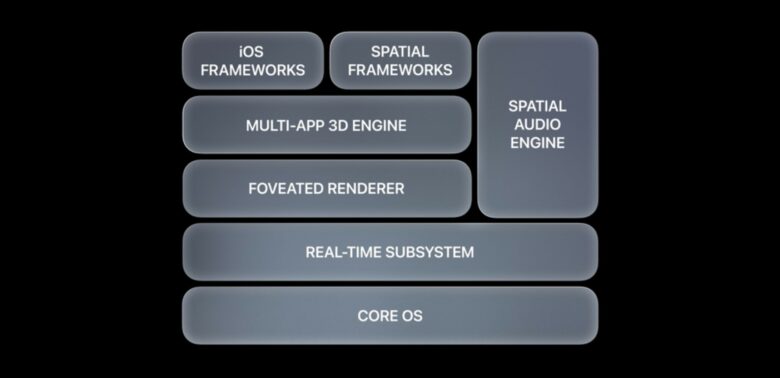
Photo: Apple
Reality Composer Pro allows developers to easily create 3D apps and environments.
The same frameworks in iPadOS and iOS are also available in visionOS to make sure many popular apps are available natively for the device on day one. Vision Pro will have its own App Store where users can find tailored apps.
More detail on the tools that will be made available to developers were outlined during Apple’s Platforms State of the Union.
Privacy and security
A feature called Optic ID can authenticate the Vision Pro wearer securely, even from an identical twin, Apple said.
Where you look is deeply important to user privacy — and that information is completely hidden from the apps running on the device. Only clicks and taps are relayed to the software.
This tech comes at a high cost
The announced price is $3,499, higher even than the rumored $2,999 price point (and much higher than competing products). Apple justifies the price by saying that a comparable spatial audio system, gigantic high-resolution display and computer would be far more costly.
Prospective customers for the high-end headset will be able to order Vision Pro early next year, Apple said.
